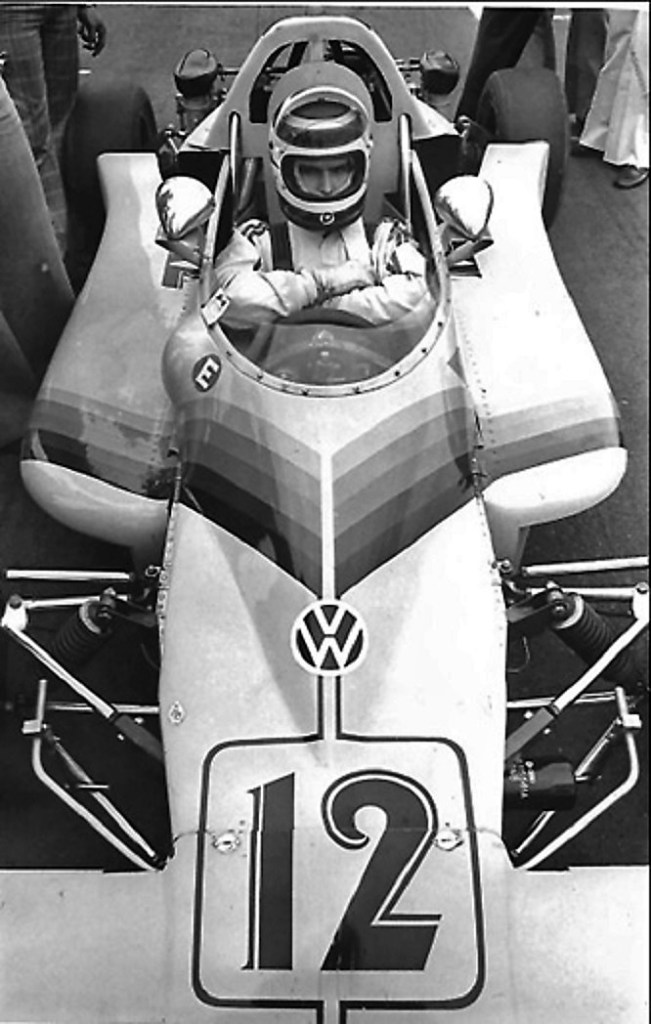
Here’s part two in a series about Formula Vee racing in Brazil by special guest writer; gearhead, petrolhead and all around car-guy, Rubens Junior. His history with hot rods, VWs and race cars is unparalleled. Check out his website, www.TheClassic Machines.com
~ by Rubens Junior ~
The Second Phase
By the mid-1970s, the Interlagos circuit was ready, and the ‘Mecca of Brazilian Motorsports‘ was back in business. It was a favorable time for motorsport as Brazilian automakers had new models in the market and some of those car companies openly supported auto racing, especially Ford. The American giant was dumping money into racing teams, from the GT classes right up to Formula Ford, its pride and joy.

Formula Ford became the mainstream class for all aspiring race car drivers, and that fuss brought VW back to the fight. With the official support from the VW factory and the help of numerous new builders that were popping up all over the country, it was easy to revive the Formula Vee.
Formula Super Vee
This was open-wheel war! Formula Ford had an initial upper hand being powered by a Ford/Renault 1400cc liquid-cooled engine, and cars were equipped with slick tires. Naturally, the Formula Ford was faster and more appealing to young drivers than the 1300cc Formula Vee. The two classes never raced against each other. To make things a little more interesting, a new spec called Formula Super-Vee was created by race teams.

The new Super Vee chassis was equipped with double-wishbone front suspension, adjustable coil-over shocks, and a 5-speed Hewland transmission. Magnesium wheels, slick racing tires, and disc brakes all around. The heart of the beast was a very spicy 1600cc VW boxer engine, with ported heads, bigger valves, and a high-compression ratio for use with racing fuel, Engle camshafts, and a pair of 48 IDA Weber carburetors. Producing somewhere around 130 HP, those cars were so fast that some added front spoiler and rear wing to keep the little monsters stuck to the pavement.

For some time, the Formula Super Vee enjoyed the status of the most important class in Brazilian motorsport., with competitors including legends like Ingo Hoffman, Alfredo Guaraná Menezes, and Nelson Piquet, who went on to become a triple Formula 1 World Champion (pictured above).
Between 1975 and 1980, the Brazilian Formula Vee enjoyed its zenith, but its popularity slowly faded away. Brazil’s greatest Formula 1 phenomenon, Ayrton Senna, was a Formula Ford enthusiast.
The Third Phase
The F-Vee was forgotten for more than 30 years, until Roberto Zulino, a gearhead / engineer, developed a new chassis in 2011 that brought the VW-powered single-seaters back to race tracks. As you can see in the picture above, the creation process was rather primitive, instead of a modern CAD program, chalk lines were drawn on the floor of his shop. Later, the original chassis was much improved, becoming lighter and more rigid.

The new car was called Naja and immediately sparked interest among the new generation of drivers and nostalgic old-timers as well. But times have changed significantly in Brazil, and the VW Beetle has reached the status of a collectible car. Parts are no longer abundant and affordable. The technical team tried a few different engines (even a Ford) and finally settled with the combination of a 1600cc, water-cooled, four-cylinder, and the 5-speed manual transmission from the VW Polo/Fox.

This engine (code named EA111) produces 110hp, and teams have the freedom to re-map the fuel injection according to the necessity. Other than that, the engine is bone stock.
The car must weigh a minimum of 590kg with the driver and a full tank of fuel. They are equipped with disk brakes all around, plus alloy rims wrapped in 195/50-R15 street radials. A modern Formula Vee can be pretty fast; at the end of the straight at Interlagos they reach 210 km/h! The front suspension is the only part still shared with the original project.

The latest phase of the Brazilian Formula Vee has been a blast since it was created in 2011. The class is once again the natural next step for the young drivers coming from the go-kart, in their journey towards Formula One. It also gives the chance for some of the legends of Brazilian motorsport to work closely with the new generation. The picture above shows Wilson Fittipaldi Jr. (right) one of the forefathers of the Formula Vee, and Ricardo Divila, the chief designer of the Brazilian Formula 1 team Copersucar; they had the opportunity to work together one more time as technical consultants for the modern Formula Vee. Sadly, Divila passed away in 2020, but his legacy lives on, he helped to create a class that has all the ingredients of the original Formula Vee; it’s fast, fun, and affordable. The Brazilian national Formula Vee championship is a very well-organized event, and grids of 40-plus cars are not uncommon. Without question, Brazilian Formula Vee has a long and prosperous road ahead.